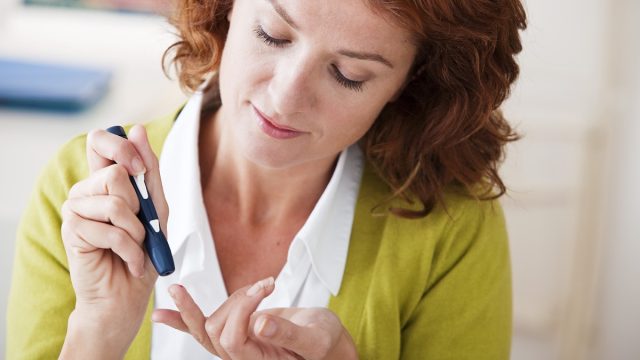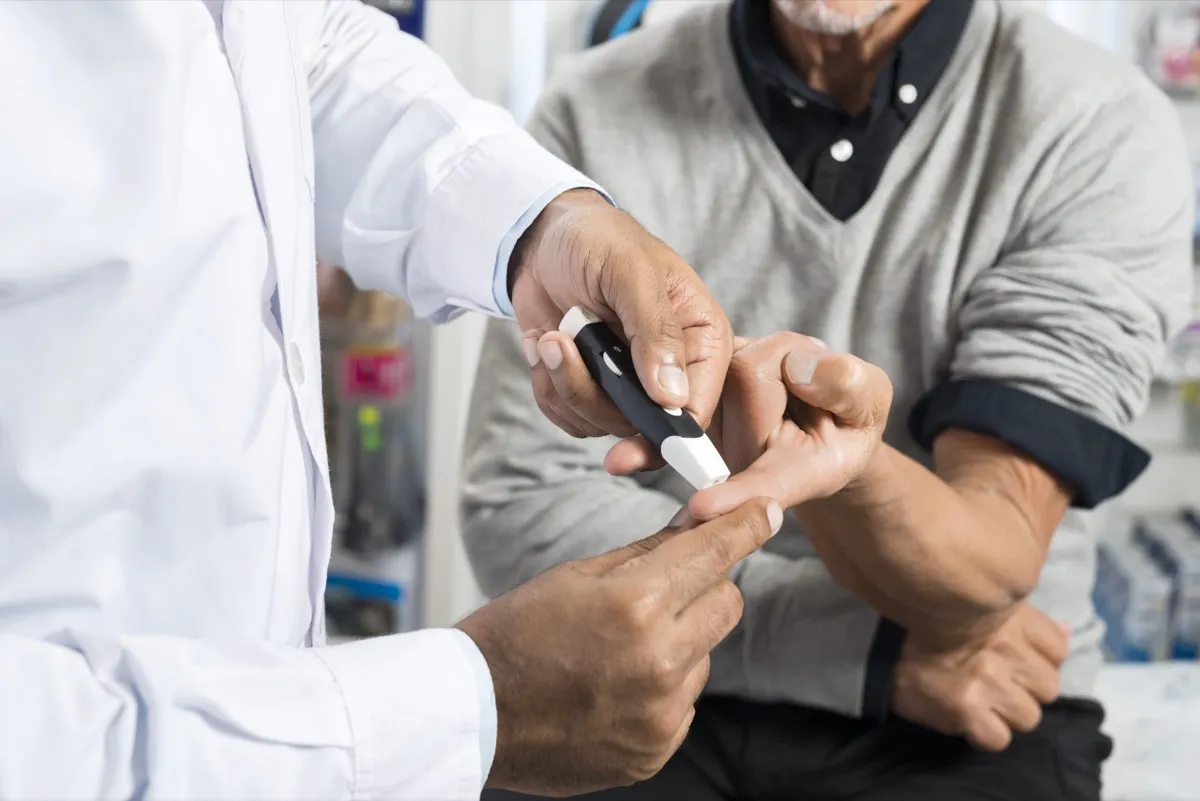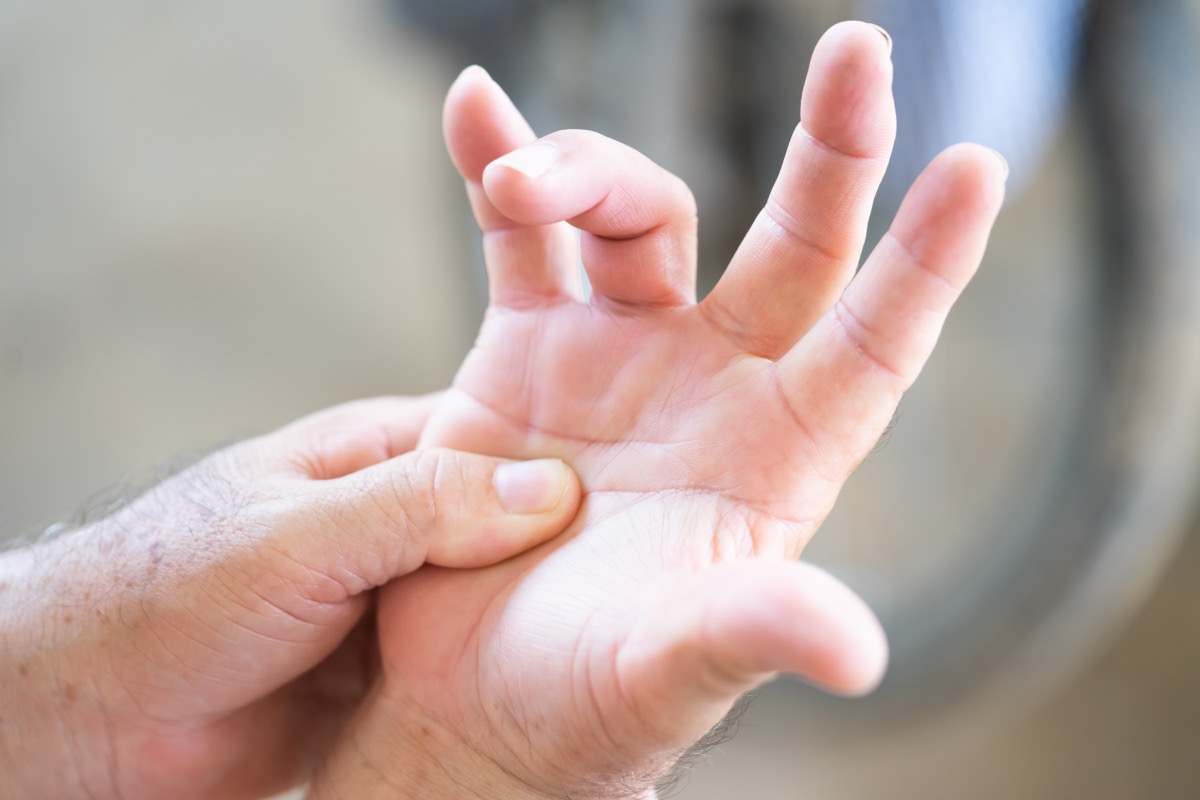From verywellhealth.com
Diabetes is a condition in which the body is unable to break down glucose (sugar) effectively. When glucose accumulates in the blood for an extended amount of time, it can damage nerves and blood vessels. As a result, various body parts and organs are impacted. People with diabetes are at increased risk of having problems with their feet.
Learn more about how diabetes affects the feet, common problems, signs, symptoms, prevention, and treatment.
eyepark/iStock/Getty Images Plus
How Can Diabetes Affect the Feet?
Prolonged high blood sugar (hyperglycaemia) can impair nerves and damage blood vessels. High blood sugar can disrupt the nerves' ability to transmit signals and can cause chemical damages. Sugar accumulation in the blood can also cause damage to the blood vessels that carry oxygen and nutrients to the nerves.
Chronically high blood sugars can increase the risk for peripheral neuropathy, which is nerve damage in the feet, legs, hands, and arms. This is the most common type of neuropathy. It affects about one-third to one-half of people with diabetes.
Diabetic Neuropathy
People who have had diabetes for a long time are at increased risk of developing neuropathy. Elevated blood glucose, age, smoking, comorbidities (coexisting health conditions), metabolic factors, and genetics also can increase the risk. There are different types of neuropathy, but the one that affects the feet is called peripheral neuropathy.
Diabetic peripheral neuropathy can increase the risk of foot complications by damaging nerves and blood vessels. Burning and tingling are common symptoms that occur when small nerves have been impacted. Loss of protective sensation (LOPS) occurs when large nerve fibres have been damaged. This can increase the risk of foot ulcers.
Many people who have neuropathy do not have symptoms, so the American Diabetes Association recommends that patients get an assessment when they are first diagnosed with type 2 diabetes and five years after being diagnosed with type 1 diabetes, and then every year afterward. However, if you have a history of neuropathy or a previous ulcer, you should have your feet examined at every healthcare provider visit.
There are various types of medications to treat the symptoms of diabetic neuropathy. In addition, smoking cessation, changing eating habits, weight loss (if indicated), and glycaemic control are important factors that can improve symptoms of neuropathy as well as reduce the progression. Unfortunately, for some people neuropathy can be permanent.
Therapeutic footwear is recommended for those who have severe neuropathy, foot deformities, ulcers, callus formation, poor peripheral circulation, or a history of amputation. Most insurance policies cover therapeutic footwear.
Gangrene
Gangrene is a necrosis (tissue death) of the skin that occurs when there is a disruption of blood flow to an area in the body. This can occur because of an injury or an infection. People with diabetes who have neuropathy, or a history of foot ulcers, are at an increased risk of developing gangrene.
The presence of gangrene warrants an immediate referral to see a specialist, such as a vascular surgeon, an interventional cardiologist, or a radiologist for evaluation and treatment.
Gangrene treatment in people with diabetes should take place right away to prevent the risk of amputation. Treatment will take a variety of forms. Debridement (surgery to remove damaged tissue) for the wound is important. Treating the infection and improving circulation to increase blood supply will also assist the healing process. Hyperbaric oxygen therapy might also be recommended.
Peripheral Vascular Disease
Peripheral vascular disease (PVD) is a term that is often used interchangeably with peripheral artery disease (PAD). Periphery refers to the vessels outside of the heart. PAD occurs when veins and arteries get clogged with fatty deposits (atherosclerosis). In lower extremity PAD, arteries in the legs become clogged, which reduces blood flow and sensation to the legs and feet.
PAD is estimated to be present in as many as 50%–60% of patients with diabetic foot ulcers. Symptoms of PAD include:
- Dry skin
- Skin discoloration
- Poor nail growth
- Leg or foot wounds that are slow to heal
- Foot ulcers
- Pain or cramping in the legs (that starts when walking and stops at rest)
Treatment for PAD includes lifestyle modifications, such as smoking cessation, exercise, and a heart-healthy eating plan. Prescription medications aimed to prevent blood clots, reduce blood pressure, and improve cholesterol are also available. In addition, getting blood sugars in good control can also improve PAD.
When these interventions are not enough, a vascular doctor may suggest certain procedures. In severe cases, angioplasty, stents, or bypass is recommended to improve blood flow.
Charcot Foot
Charcot foot is a deformity that occurs when there is a weakening in the bones because of neuropathy. Sensory, motor, or autonomic neuropathy, trauma, and metabolic abnormalities all contribute to Charcot foot. Neuropathy can cause a decrease in sensation in the joints and the weakening of bones can result in fractures.
Repeated walking on the foot, worsens the condition, ultimately changing the shape of the foot. Charcot foot increases the risk of wounds and foot ulcers. This is a very serious condition that can result in amputation if not identified and treated.
Treatment of Charcot foot is complicated and includes a multidisciplinary team that specializes in diabetes. Treatment varies depending on many factors, including the phase of the disease process, location, severity of the disease, presence or absence of infection, and other comorbidities. Plans vary and can include basic shoe modification, treatment of infection, and limb amputation (removal).
Common Diabetic Foot Problems
People with diabetes are at increased risk of foot problems due to neuropathy or reduced blood flow. Some common types of foot conditions are:
- Athlete's foot: People with diabetes are at an increased risk of athlete's foot (tinea pedis), the most common fungal condition. People with diabetes who have autonomic neuropathy may have excess sweating, which can increase the risk of fungal growth.
- Blisters: Diabetic blisters (bullosis diabeticorum) can occur on the feet, legs, and backs of hands. Typically, they are a consequence of hyperglycaemia and will heal on their own when blood sugars return to normal levels.
- Bunions: Bunions cause your big toe to lean toward your second toe and can cause the bone leading to the big toe to stick out. Bunions are typically the result of poorly fitting shoes.
- Calluses: Autonomic neuropathy can also decrease sweating, resulting in dry feet, which can increase callus formation. Calluses that are not taken care of increase the risk of foot ulcers.
- Corns: Corns are rough spots caused by too much rubbing or pressure on the same spot. These typically occur when a person with diabetes has neuropathy and is wearing ill-fitting shoes.
- Dry skin: Dry skin can be a result of hyperglycaemia. High blood sugar increases urination as a way to rid the body of excess glucose. Increased urination may lead to dehydration and dry the skin. This can also occur because of poor circulation, making dry skin itchy.
- Diabetic foot ulcers: A foot ulcer is an open sore in which partial skin is lost in a person who has diabetes. In addition, people with diabetes who have neuropathy and PAD are at increased risk of foot ulcers.
- Fungal infection of nails: Fungal infections can occur between the toes and also around the nail beds. People with diabetes are at increased risk of fungal infections due to decreased immunity and disruptions in sweat glands.
- Hammertoes: This foot deformity can be a result of muscle loss and neuropathy. They can be painful and can increase the risk of foot ulcers, especially if a person with diabetes is not wearing proper shoes.
- Ingrown toenails: Ingrown toenails often occur when toenails are not cut properly.
- Plantar warts: These skin-coloured warts on the bottom of the feet are more common in people with diabetes. Although aesthetically displeasing, typically they are not harmful.
Signs of Problems With Diabetic Feet
People with diabetes may not know that they are experiencing neuropathy. Up to 50% of diabetic peripheral neuropathy may be asymptomatic.
However, the most common symptoms of peripheral neuropathy include:
- Numbness
- Tingling
- Pain
- Burning/Stinging
- Foot weakness
- Loss of feeling
- Inability to feel hot and cold
- Changes to the shape of feet or toes
If you see any changes in your feet or have any physical symptoms, you should be examined by your healthcare provider. Early detection and treatment can prevent complications, such as injuries and ulcers.
Preventing Diabetic Foot Problems
It is possible to prevent diabetic foot problems by having your feet examined regularly. Proper hygiene and foot care, as well as understanding your risks, can assist you in having healthy feet.
Achieving good glycaemic control (maintaining healthy blood glucose levels) is a daily process that can be burdensome. If you are having difficulty getting your blood sugars in a healthy range, contact your healthcare team. They can help you simplify your diabetes regimen and provide you with treatment options that suit your needs.
People with a history of ulcers, neuropathy, or PAD, would benefit from a foot exam at every healthcare provider visit.
Diabetic Foot Care Tips
Understanding how to care for your feet is an important part of diabetes management. Adequate care can prevent, detect, and treat abnormalities as soon as they appear. It is always a good idea to check your feet daily in a mirror. Inspect between your toes and on the soles of your feet. Other self-care tips include:
- Wash your feet daily with warm, not hot, water.
- Do not soak your feet.
- Dry your feet well and moisturize, but do not apply lotion between your toes (this can increase the risk of fungus).
- Keep your toenails trim.
- Change your socks daily and wear moisture-wicking, cotton socks.
- Before putting on your shoes, shake them out well to remove objects that can cause injury.
- Do not walk around barefoot.
- Wear shoes that fit properly and do not cause rubbing.
- Avoid smoking.
- If you notice any new issues, contact your medical team.
Summary
Having a history of high blood sugar, neuropathy, and reduced circulation can increase your risk of a variety of foot conditions, some which are more severe than others. Making lifestyle changes, such as eating a heart-healthy diet, exercising, and quitting smoking can help prevent or slow down the progression of any foot issues. Understanding what types of things to look out for as well as important self-care habits can improve the health of your feet.
If you notice a change in the physical appearance or feeling in your feet, contact your medical team. You are not alone in your journey with diabetes. And there are many interventions that can improve your quality of life.
:max_bytes(150000):strip_icc():format(webp)/GettyImages-9967772961-18bd9e71897e46dfa2c9713149f86afd.jpg)




